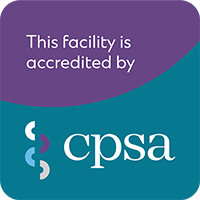Vivo Cura Health Blog
Read the latest from the Vivo Cura team, featuring posts about our research studies, helpful medical, and perspectives on innovations in treating muskuloskeletal pain.

Does Compensation Result in Worse Health Outcomes? – Part 2
In our previous blog, we discussed the relationship, or lack of such in regard to the claim that people may understate their health status to obtain financial gain. Today, we will focus on whether compensation and the associated processes such as legal involvement result in poorer health outcomes. This is on the background of Alberta moving to no-fault, with suggestions that ‘tort’ (ability to sue) can be problematic for the health of people recovering from injuries sustained in a motor vehicle collision.

Does Compensation Result in Worse Health Outcomes?
The billboards are advertising; Spotify is advertising – that sigh of relief we all apparently hear is the lowering of auto rates. Well, as long as you don’t consider the 7.5% increases over the next 2 years – and then we’ll save money – up to $400 apparently. So, what is the cost, what are we giving up to ‘save money’. These savings are tied towards the move to a no-fault system, whereby anyone injured in a motor vehicle collision can access care, irrespective of whether you are the ‘at-fault’ driver or not. Well, you can now actually.

Platelet-Rich Plasma for Chronic Neck Pain – Does It Really Work?
We have previously demonstrated in people with chronic neck pain arising from a whiplash trauma who have failed previous conservative treatment that injection of platelet-rich plasma (PRP) into the facet joints is safe, and provides significant relief of pain and disability. The positive benefits were demonstrated, at 3-months, and maintained at 6-, and 12-months. Thus, this looked promising as a solution for those injured in whiplash mechanisms to improve their quality of life.

Medications, Diagnostic Imaging and Health Outcomes in Chronic WAD
Higher utilization of diagnostic imaging modalities and increased use of medications are associated with worse health outcomes in chronic whiplash-associated disorders.
Firstly, thank you to a great team of collaborators – Michael Westaway, Geoff Schneider and Dr Ben Andruski, who were instrumental with this publication. We were recently informed that this manuscript had been accepted for publication by Physiotherapy Canada.

Reward Processing Following Whiplash Injury – Does This Help Explain Chronic Pain Persistence?
It’s been one of those months and one of those weeks. Busy, busy, busy, but good busy – grant success and publication success – a very rare combination for which you have to be thankful. Here’s our most recent publication, which I am very grateful to have been involved with.
Approximately 50% of people injured in motor vehicle collisions continue to report symptoms 12 months later. They demonstrate a constellation of symptoms that vary between individuals.

Non-Invasive Brain Stimulation for Relief of Chronic Pain – Has the Time Arrived?
Well, we’re about to find out. Here is the protocol for a study we have actually just completed. It has taken us quite a while to get the protocol published, which happened this week thankfully. Thankfully, the completed results are likely to hit the press in the coming weeks.
What Is All the Fuss About?
When pain becomes chronic (> 3-months duration), the brain adapts.

Platelet-Rich Plasma for the Neck – Maybe Not So Promising???
At the recent IPSIS meeting, Dr Eldon Loh from Western University in Ontario presented the results of a study investigating the efficacy of PRP in the neck region. I was honored to be part of this study, which compared PRP to the use of steroids over a 6-month time period.
Dr. Loh and team were rigorous in their pursuit of whether outcomes were better for PRP versus steroid injections.

Welcome to Dr Taylor Burnham
In July of this year, Dr. Taylor Burnham joined Vivo Cura Health. You likely recognize the name – yep, the son of one Dr. Robert Burnham. Dr. T joins us from the University of Utah as an interventional physiatrist, where he has extensive experience in all injection techniques, but also brings some very solid research underpinnings to his practice – Yey!

Back to Conference Proceedings
Well I’m back in conference territory, with a bunch of highly intelligent specialist MDs talking all things interventionist. I’m surrounded by docs who are trained with needles to get medicine into areas that relieve pain. They can literally bend needles sideways and around corners – they are that talented. We will be hearing lectures about how to access tricky areas, where the medicine really flows and how to image where the medicine flows. Lectures will be spent on correct diagnostic standards and treatment outcomes of various procedures. This is all combined with anatomy reviews of the relevant body region, thus filling my brain with a cornucopia of information to absorb and process.




